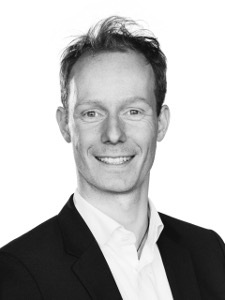Jan Frahm receives an AUFF Nova grant from Aarhus University Research Foundation
While the laws of classical mechanics can be used to describe the movement of macroscopic particles, quantum mechanics provides a model for the behaviour of microscopic particles.

These models are conceptually very different, but they both build on the same surrounding space on which the particles live, a Riemannian manifold, and this allows to compare the two models. A spectral correspondence is a relation between so-called classical and quantum resonances. Resonances are complex numbers encoding the long-term behaviour of the corresponding classical or quantum mechanical system.
For general Riemannian manifolds, spectral correspondences are difficult to establish, but for some particularly symmetric manifolds surprisingly explicit spectral correspondences have recently been obtained. It seems natural to try to extend these results to more general manifolds, but there are both conceptual, geometric and analytical difficulties to overcome.
The key idea of this project is to study spectral correspondences in a simpler geometric framework, for so-called affine buildings. Buildings are discrete counterparts of manifolds and can be defined and studied purely in terms of algebra and combinatorics. The simplest affine buildings are trees, i.e. collections of points connected with edges so that there are no loops. The goal of this project is to understand spectral correspondences for buildings and solve some of the analytical problems using algebraic and combinatorial methods. We expect that some of the techniques and ideas for buildings can be transferred to the case of manifolds and help us to solve some of the problems mentioned above. Moreover, affine buildings are themselves interesting mathematical objects, allowing applications to geometric group theory and number theory.
The project funding of DKK 2.043.800 will be used to hire a postdoc researcher for three years as well as for travel and operational costs.
The aim of AUFF NOVA is to stimulate courageous and innovative research projects of high quality. The project must be pioneering in its field and show clear potential for scientific breakthroughs.
